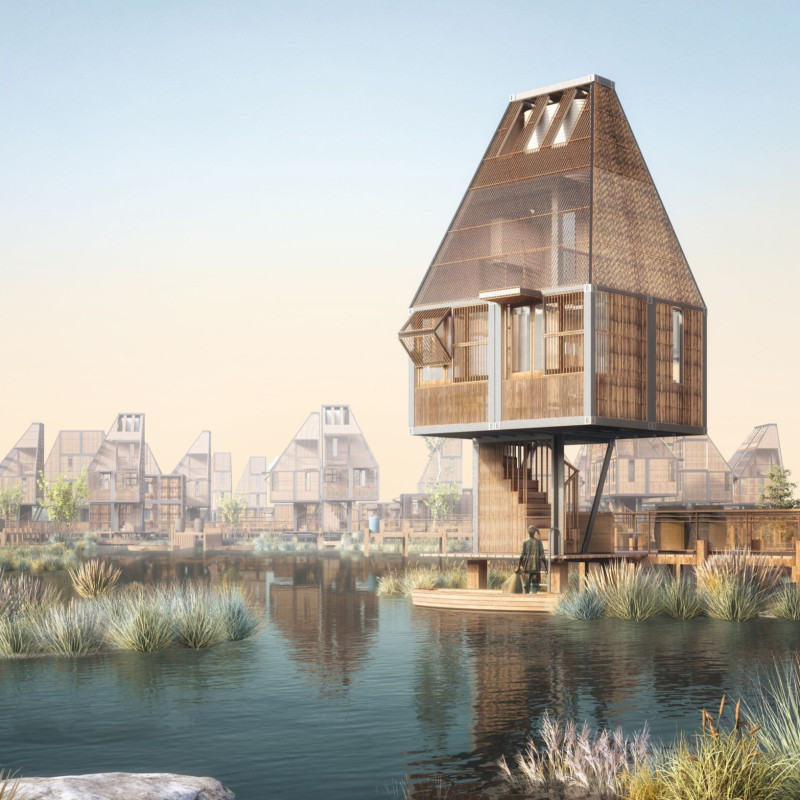5 key facts about this project
At first glance, the project showcases a striking yet harmonious silhouette that interacts sensitively with the landscape. The culmination of geometric lines and organic shapes reflects both contemporary aesthetics and functional requirements. The careful alignment of windows and openings invites natural light to permeate the space, fostering an ambiance that is both inviting and energizing. This interplay between light and shadow not only enhances the architectural experience but also serves to reduce reliance on artificial lighting, promoting energy efficiency.
The project’s layout is meticulously organized to facilitate flow and accessibility. Open spaces are strategically positioned to encourage social interaction, while private areas are thoughtfully placed to ensure comfort and seclusion. This duality fosters a balance between community and personal space, demonstrating a keen understanding of modern living dynamics. The design also considers future adaptability, with flexible areas that can evolve to meet changing needs over time, a key consideration in contemporary architecture.
Materials play a critical role in this architectural endeavor, with a curated selection that reflects both durability and aesthetic appeal. The use of locally sourced timber and stone not only ties the structure to its surroundings but also promotes sustainability by minimizing transportation impacts. High-performance glass is employed for its ability to provide views while maintaining energy efficiency through thermal insulation and solar control. Furthermore, environmentally friendly finishes have been integrated throughout the design, showcasing a commitment to sustainable building practices.
Unique design approaches throughout the project contribute significantly to its identity. An emphasis on biophilic design is evident, with features that promote a connection to nature, such as green roofs, wall gardens, and water features. These elements not only enhance the aesthetic quality of the architecture but also support biodiversity and create a healthy microclimate. Through strategic landscaping, outdoor spaces have been configured to extend the living experience beyond the confines of the built environment, fostering a profound connection with nature.
Furthermore, the project's integration of technology reflects a forward-thinking approach. Smart home systems have been incorporated to enhance the functionality of the living spaces while prioritizing user comfort and quality of life. Automated climate control, lighting systems, and security features provide an intuitive user experience, aligning with contemporary expectations for modern dwellings.
The essence of the architectural design project lies in its ability to merge functionality, sustainability, and aesthetics into a cohesive whole. It stands as a testament to thoughtful design strategies that prioritize both user experience and environmental impact, thus encapsulating the essence of responsible architecture in a modern context.
For those interested in exploring the project further, detailed architectural plans, sections, and design elements provide deeper insights into the innovative approaches employed. The presentation of the project captures the nuances and intricacies of the design, making it a valuable resource for architects, designers, and anyone keen on understanding contemporary architectural practices. Engaging with these elements can reveal a wealth of architectural ideas and solutions that inform the future of design.


 Ahmed Waheed Ahmed Saleh,
Ahmed Waheed Ahmed Saleh,  Omar Elbardawily,
Omar Elbardawily,  Muhamed Aziz
Muhamed Aziz 























